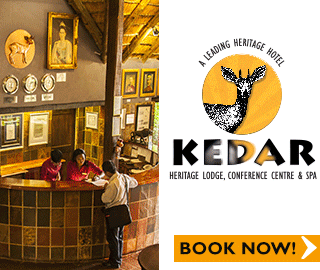

Mauritius: Experience Unparalleled Luxury
BY HANS KANHYE 6 FEBRUARY 2017 08:43
“Mauritius was made first, and then heaven, and that heaven was copied after Mauritius”. Mark Twain’s words still reflect the breathtaking scenery of pristine, immaculate, sandy, beaches in turquoise lagoons embracing a land of green, lush sugar cane fields, unspoilt forests, lakes and scenic mountain ridges.
Mauritius has not rested on its laurels of natural beauty and warm climate. It has gone a long way from its initial sun, sea and sand proposition to offer excellence at its best: unparalleled luxury with a legendary sense of hospitality. Indeed, if Mauritius did not exist it should have been created!
This is an ideal tourist destination the whole year round, as underscored by the latest campaign, Mauritius365. Although the sector caters for all the different categories of tourists, the focus is on high-end luxury, with many first class hotels offering the perfect, dream holiday of a lifetime.
This excellence is exemplified by the Constance Le Prince Maurice Resort. It is situated on the North East coast, in sixty acres of luxuriant vegetation and a white sandy beach, surrounded by a clear and calm lagoon. The elegantly-designed suites are nestled on stilts and guests dine on a floating restaurant.
The hallmark of this deluxe boutique hotel is its uncompromising tailor-made service to guest. A member of the very select club of “The Leading Hotels of the World”, it has bagged several international awards since its inception. This year’s accolades include: 16th leading luxury hotel of the World, 3rd most outstanding golf resort in the World, No. 1 luxury resort in Indian Ocean, the Wine Spectator’s Award of Excellence and Trip Advisor’s Certificate of Excellence.
Port Louis, a tale of two cities
There is more to Mauritius than just grand hotels. It has much to offer in terms of unique sites, culture, flora and fauna. Port Louis is an unavoidable stop on your journey. The modern capital has sprung from the historic city to give the visitor a unique feel of walking across ages. A hectic locality, the heart of government and business, Port Louis is also home to most of the vestiges that remind the visitor that Mauritus is a real melting pot.
If coming from the North, the first landmark, a few metres away from the modern cruise ship terminal is the Aapravasi Ghat World Heritage Site. This is the Immigration Depot where close a million indentured labourers from India were quarantined in the eighteenth century before being dispatched to sugar plantations across the world and within the island. Today, its interactive museum walks the visitor through this unique labour migration system that the British pompously called the “Great Experience”.
A few yards away lies the General Post Office, an imposing building made of large stone blocks, in a traditional Victorian architecture, reminiscent of British rule. This was inaugurated in 1870, almost a century after the introduction of postal services in Mauritius, the first such services outside Britain in the colonial empire. It is still in use and now comprises a Postal museum.
Next is the Caudan Waterfront, a unique concept of business and leisure. This peninsula was home to quays, warehouses, docks and even a powder magazine for the last three centuries before being converted into a modern mega-cultural venue in 1996. Today, there are close to 200 designer boutiques, shops, art galleries, cinemas, restaurants, hotels, banks and other businesses. The latest designer collections as well as local handicrafts are available here. There is also the Blue Penny Museum where collectors can admire one of the oldest and rarest stamps, statues and coins in the World.
Right in front of the waterfront, bordered by centenary royal palms, sits the beautiful square – Place d’Armes. The centre of political power is located here, with the National Legislative Assembly and the Government House. Mauritius obtained its independence from UK in 1968 and has become a model of parliamentary democracy and good governance in this part of the World. It became a Republic in 1992 but chose to stay in the Commonwealth. Freedom of speech and rule of law are enshrined in the constitution. The press is free and unfettered, with three private radio stations and about twenty newspapers for a population of barely 1,2 million inhabitants.
The vibrant Central Market is just on the left, enticing visitors with its mouth-watering smells of spices, vegetables and fruits. It displays an abundance of delicious tropical fruits like papayas, mangoes, litchis, pineapples, avocados, passion fruits, bananas, guavas and lemons, without forgetting the herbs that are supposed to cure all possible diseases, even imaginary ones! Take this opportunity to enjoy a local treat, a pair of dholl puree. This thin roti of Indian origin, stuffed with some curry and chutneys is the most typical street food in the island. It is customary to complement this with an icy alouda- a famous local milkshake made with vanilla and other condiments. The market is always crowded, so tourists should beware of the occasional pick-pocket, although Mauritius remains of the safest countries in the World.

There is more to Mauritius than just grand hotels. It has much to offer in terms of unique sites, culture, flora and fauna. Port Louis is an unavoidable stop on your journey. The modern capital has sprung from the historic city to give the visitor a unique feel of walking across ages.
Everything being within walking distance, there is no excuse to miss the Natural History Museum, one of the oldest in the southern hemisphere. This is a replica of the Colombo Museum in Sri Lanka. It displays the unique flora and fauna of the island and has a gallery dedicated to the Dodo, the national emblem of Mauritius. Unfortunately, there is nothing as dead as the dodo, but here you can still admire the only dodo skeleton that has been assembled from the bones of a single dodo.
Finish the city’s visit by walking to the Champ de Mars, the oldest racecourse in this part of the World, where horses have been running non-stop since 1812! This lies in the shadow of the Citadel, a fort built in the mid nineteenth century to no avail as Mauritius has remained a peaceful country to this date. On top of seeing the pounder guns, powder magazine and barracks, you will have a great opportunity to admire Port Louis from this great vantage point.
Unique Flora and Fauna
Mauritus is home to a unique collection of flora and fauna. The National Botanical Garden at Pamplemousses has an impressive array of indigenous and endemic tropical plants, enriched by introductions from other parts of the world, especially palms, orchids, ferns, herbs and spices. Take time to admire gigantic Amazonian water lilies and the majestic Talipot palms that produce the biggest inflorescence in the flowering kingdom as they flower only once in their lifetime and die after that! If you are visiting in May-October, you can see the orange-red flowers of Trochetia Boutoniana, the national flower of Mauritius. There are also centennial tortoises, deer and many birds. Several of the latter are endemic to Mauritius, like the pink pigeon, fody, echo parakeet, pic pic and cardinal.
Scenic cultural spots
The South has some unique touristic sites. The Seven-coloured earths at Chamarel is one of the only two places on Earth where you can admire soils of different colours at the same spot. The more distinct shades are red, brown, grey and purple. This unique geological phenomenon, caused by the differential cooling of volcanic rocks over time, can only be admired here and thousands of kilometers away in Papua New Guinea.
From here you are not far from Le Morne Mountain, which is now a World Heritage Site in memory of the slaves who lost their lives jumping off this mountain while escaping their inhuman masters. A hundred-metre long trail has just been erected to enable a better view of the cultural landscape.
The Ganga Talao, a crater-lake set in an idyllic landscape is the most-visited place of the island. According to legends, sacred water flowed down the Ganges River in India to settle here. The World’s highest statue of God Shiva has been erected here. If you are visiting during the Maha Shivratree festival in February, you will come across hoards of pilgrims on the roads, on their way to this sanctuary. This is a reminder of the fact that Mauritius is a land of festivals. Its multi-ethnic and multicultural set-up ensures a myriad of festivals all year round: Holi, the festival of colours, the Chinese Lamp festival, Divali, the festival of lights, Christmas, the festival Kreol with international participants…
Sea, sea everywhere
Fishing is a national hobby. Why not take a rod and try your luck at one of the many shallow lagoons around the island? On the other hand, deep-sea fishing is such a well-established sport that Mauritius annually hosts the Marlin World Cup. It is of note that this small Republic has one of the largest international maritime zones, as it has jurisdiction over the islands of Rodrigues, Agalega and St. Brandon.
Vibrant Nightlife
Looking to finish it off superbly after an eventful day? Then look no further than Grand Bay, the nightlife hub. It is littered with bars, nightclubs, discos, restaurants and dancing halls, offering an amazing palette of rock, reggae, jazz, pop, without forgetting the local sega and you can party till the early hours of dawn.
Mauritius will continue to remain the Star and Key of the Indian Ocean for a long time to come.
















